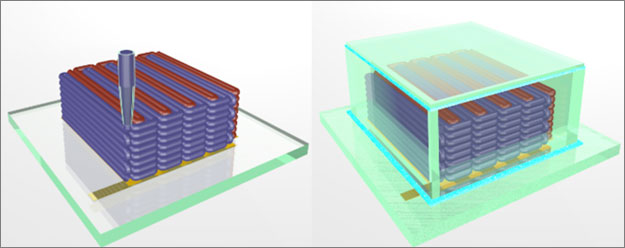
Photo from Hansjorg Wyss Institute for Biologically Inspired Engineering at Harvard University Harvard Shield
The reaction to first learning about 3D printing is usually one of intrigue and then pondering what the capabilities are for the technology. The simple answer to the functional use question is that 3D printing streamlines the process for prototyping a product. The futuristic idea is that the technology will make it possible to print anything right inside your house, without the need to ever go to the store. The reality, however, is that the technology has far wider implications beyond commercial use.
Jennifer Lawrence, Hansjörg Wyss Professor of Biologically Inspired Engineering at the Harvard School of Engineering and Applied Sciences, and her team of researchers from Harvard and the University of Illinois at Urbana-Champaign created a 3D printing process for making microbatteries that could be used in a wide spectrum of applications, including micro medical and communication devices. These devices already existed, but had no battery powerful enough to function. The microbatteries the researchers created are “comparable to commercial batteries in terms of charge and discharge rate, cycle life and energy densities.” The process works by printing two separate filaments. The two inks are both lithium metal oxide compounds and act as the anode and cathode of the battery. The 3D printed anodes and cathods are then placed in a container with an electrolyte solution to make the battery complete. The technology shows the far reaching impact of 3D printing and the wide possibilities both big and small.
Check out the video below to see the technology in action. Click on the source below for more information.
SOURCE: Wyss Institute
